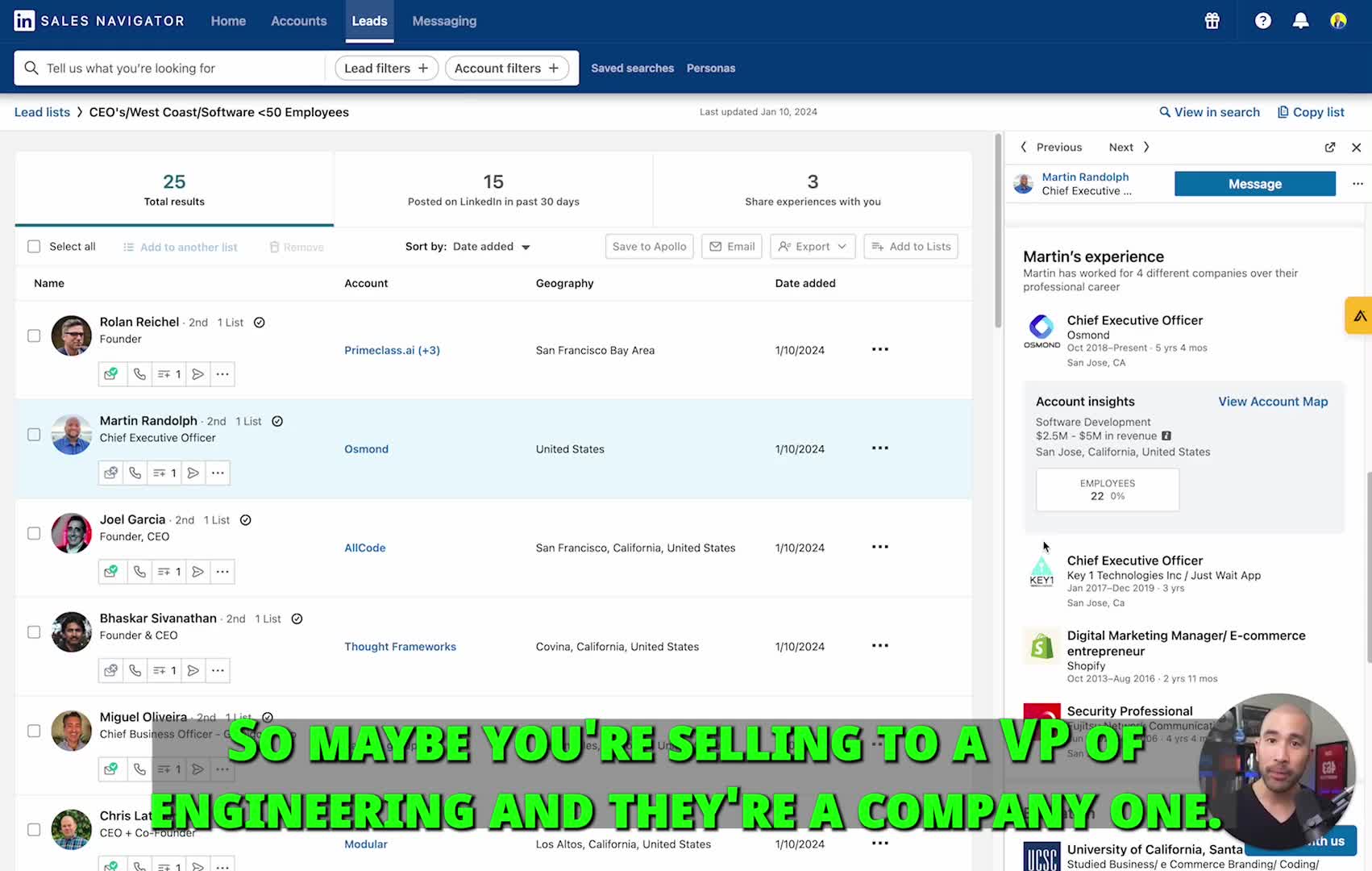lead nurturing
How can you effectively use LinkedIn newsletters to grow your audience and generate leads?
LinkedIn newsletters are a powerful, low-effort growth tool that delivers content directly to subscribers' inboxes while being boosted by the algorithm. To succeed, brand your newsletter with a memorable name and eye-catching graphics, write concise (400-800 words) skimmable content following a consistent structure: personal intro, one clear takeaway, useful resource links, and occasional soft CTAs. Maintain consistency in your publishing schedule and repurpose existing content to save time. Drive subscriber growth by promoting in your bio, posts, and comments, then track metrics like engagement and lead conversions using UTM links. This approach builds trust at scale while creating a sustainable path to conversions.
Watch clip answer (11:43m)How does a quiz strategy help convert LinkedIn profile visitors into qualified leads?
A quiz on a LinkedIn profile serves as a genius qualification method because visitors take active steps to engage, effectively qualifying themselves for services. When profile visitors complete the quiz, they receive a personalized connection message, creating a direct line of communication. This approach has proven remarkably effective, with around 95% conversion rate on outreach messages following quiz completion. The strategy continues to deliver results beyond initial connection, with a high success rate of converting these qualified leads into sales calls, creating a streamlined pathway from profile visitor to potential client.
Watch clip answer (00:21m)How can LinkedIn Account Based Marketing (ABM) bridge the gap between sales and marketing teams?
LinkedIn ABM bridges the sales-marketing gap by aligning both teams on high-value accounts that convert. The strategy starts with defining your Ideal Customer Profile (ICP) based on patterns among successful customers and organizing prospects into three tiers. Tier 1 includes high-value enterprises needing deep personalization, Tier 2 represents mid-market core customers, and Tier 3 comprises lower-priority but valuable smaller businesses. This structured approach ensures proper resource allocation, with personalized outreach for top accounts and automated engagement for lower tiers. When combined with LinkedIn ads to warm up prospects, LinkedIn ABM creates a cohesive strategy that eliminates blame between departments and focuses efforts on accounts with the highest conversion potential.
Watch clip answer (12:23m)Is LinkedIn Sales Navigator worth the investment for B2B sales professionals?
LinkedIn Sales Navigator is definitely worth the investment for B2B sales professionals. According to the expert, it costs under $100 per month and provides significant value, especially when closing B2B deals. Just one successful deal can easily recoup the monthly subscription cost. The platform offers powerful features like account mapping, lead list building, and customized alerts that notify you of important trigger events such as job changes, company news, and profile views. These features help sales professionals build targeted prospect lists, maintain engagement with leads, and identify optimal times to reach out, ultimately improving conversion rates and sales efficiency.
Watch clip answer (07:12m)What are the key strategies for writing effective LinkedIn messages that get responses?
Effective LinkedIn messages should lead with relevant pain points rather than product features, as this differentiates you from competitors. Keep messages concise (under 300 characters for initial outreach) and use simple language. Add value before asking for time by sharing useful third-party content like webinars or articles. Leverage voice memos for better engagement and name-drop mutual connections to build familiarity. Always respond quickly to messages, as speed-to-lead increases your chances of booking meetings and closing deals.
Watch clip answer (00:14m)What is the most effective approach for follow-up messaging when clients have already agreed to take action?
When clients have agreed to take action (like signing contracts or sending payments), Matt Easton recommends maintaining clear, consistent messaging rather than changing your approach. Instead of passive follow-ups like "just checking in," provide the specific resource they need to complete their promised action. For example, say: "I wanted to make sure you had the link to upload your statements" or "the address to send the check." Keep the same straightforward message across multiple follow-ups without changing tonality or showing frustration, as this maintains professionalism while gently reminding clients of their commitment without creating resistance.
Watch clip answer (04:03m)




